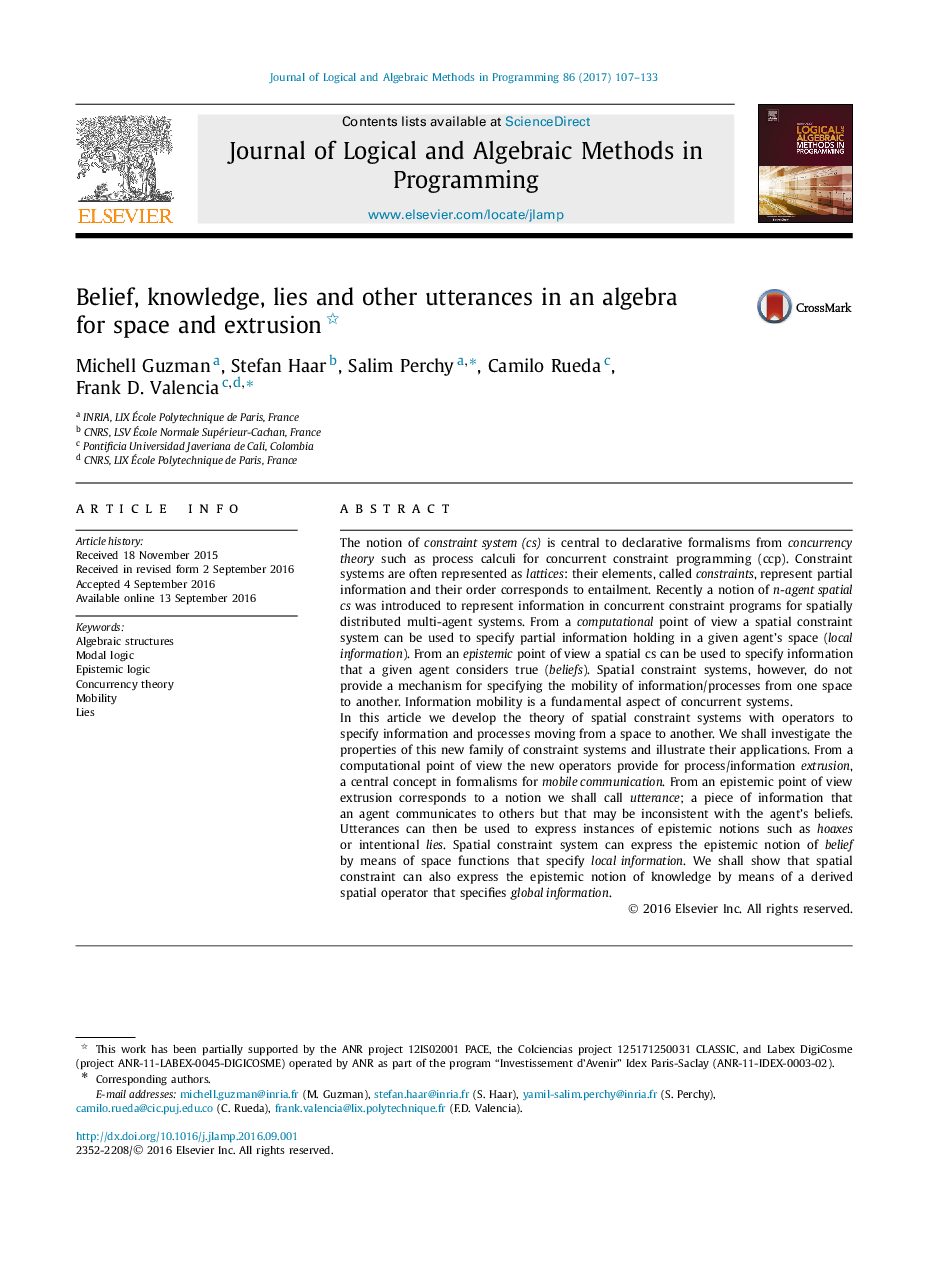| Article ID | Journal | Published Year | Pages | File Type |
|---|---|---|---|---|
| 4951484 | Journal of Logical and Algebraic Methods in Programming | 2017 | 27 Pages |
â¢Extrusion and space operations expressing mobility in distributed concurrent systems.â¢Canonical solutions for deriving corresponding extrusions to space functions.â¢Characterization of properties such as space consistency and Galois connections.â¢Semantic interpretation of formulas from a modal logic of Belief and Utterance.â¢Representation of S4 knowledge using the spatial operation for global information.
The notion of constraint system (cs) is central to declarative formalisms from concurrency theory such as process calculi for concurrent constraint programming (ccp). Constraint systems are often represented as lattices: their elements, called constraints, represent partial information and their order corresponds to entailment. Recently a notion of n-agent spatial cs was introduced to represent information in concurrent constraint programs for spatially distributed multi-agent systems. From a computational point of view a spatial constraint system can be used to specify partial information holding in a given agent's space (local information). From an epistemic point of view a spatial cs can be used to specify information that a given agent considers true (beliefs). Spatial constraint systems, however, do not provide a mechanism for specifying the mobility of information/processes from one space to another. Information mobility is a fundamental aspect of concurrent systems.In this article we develop the theory of spatial constraint systems with operators to specify information and processes moving from a space to another. We shall investigate the properties of this new family of constraint systems and illustrate their applications. From a computational point of view the new operators provide for process/information extrusion, a central concept in formalisms for mobile communication. From an epistemic point of view extrusion corresponds to a notion we shall call utterance; a piece of information that an agent communicates to others but that may be inconsistent with the agent's beliefs. Utterances can then be used to express instances of epistemic notions such as hoaxes or intentional lies. Spatial constraint system can express the epistemic notion of belief by means of space functions that specify local information. We shall show that spatial constraint can also express the epistemic notion of knowledge by means of a derived spatial operator that specifies global information.
